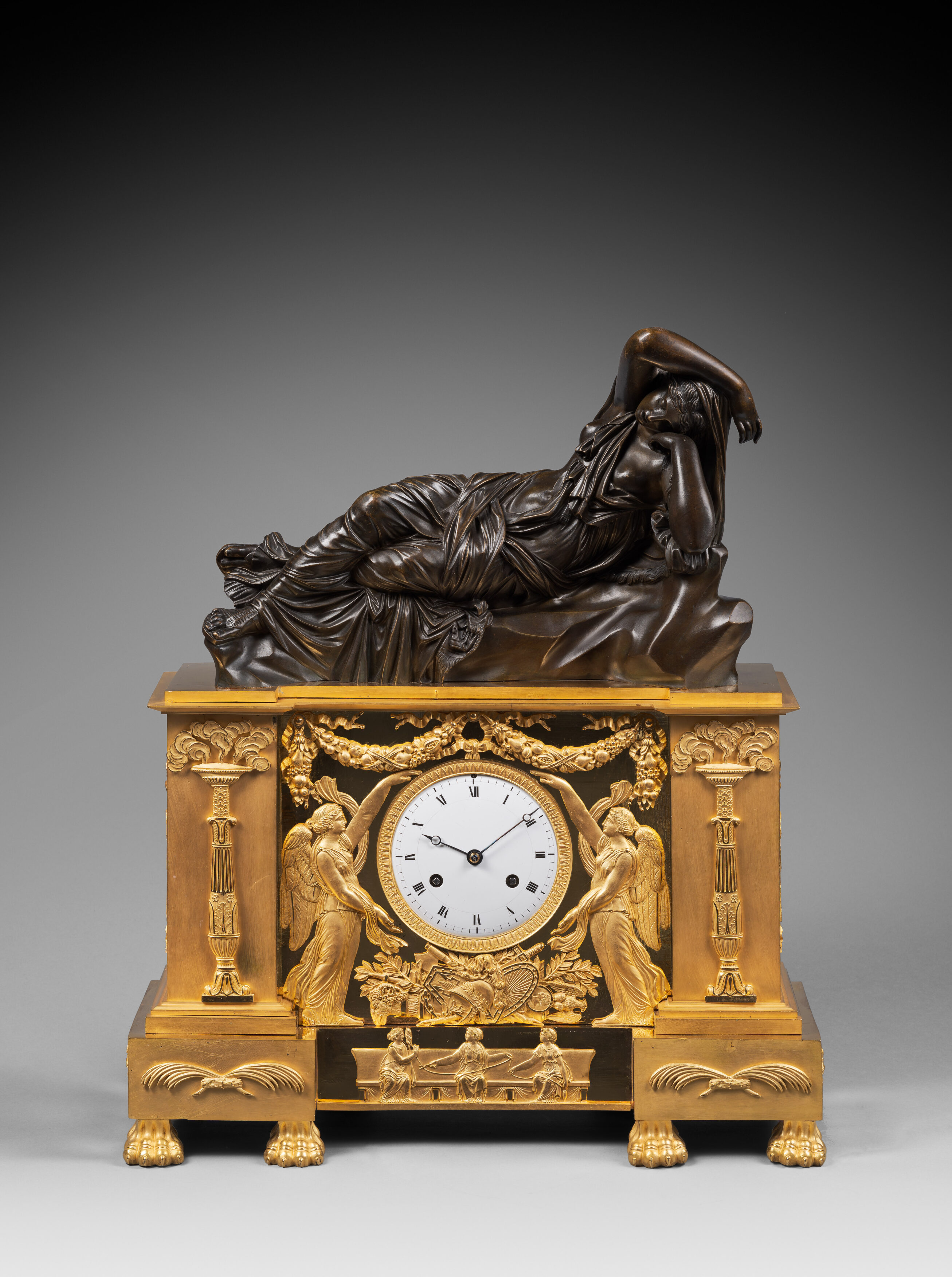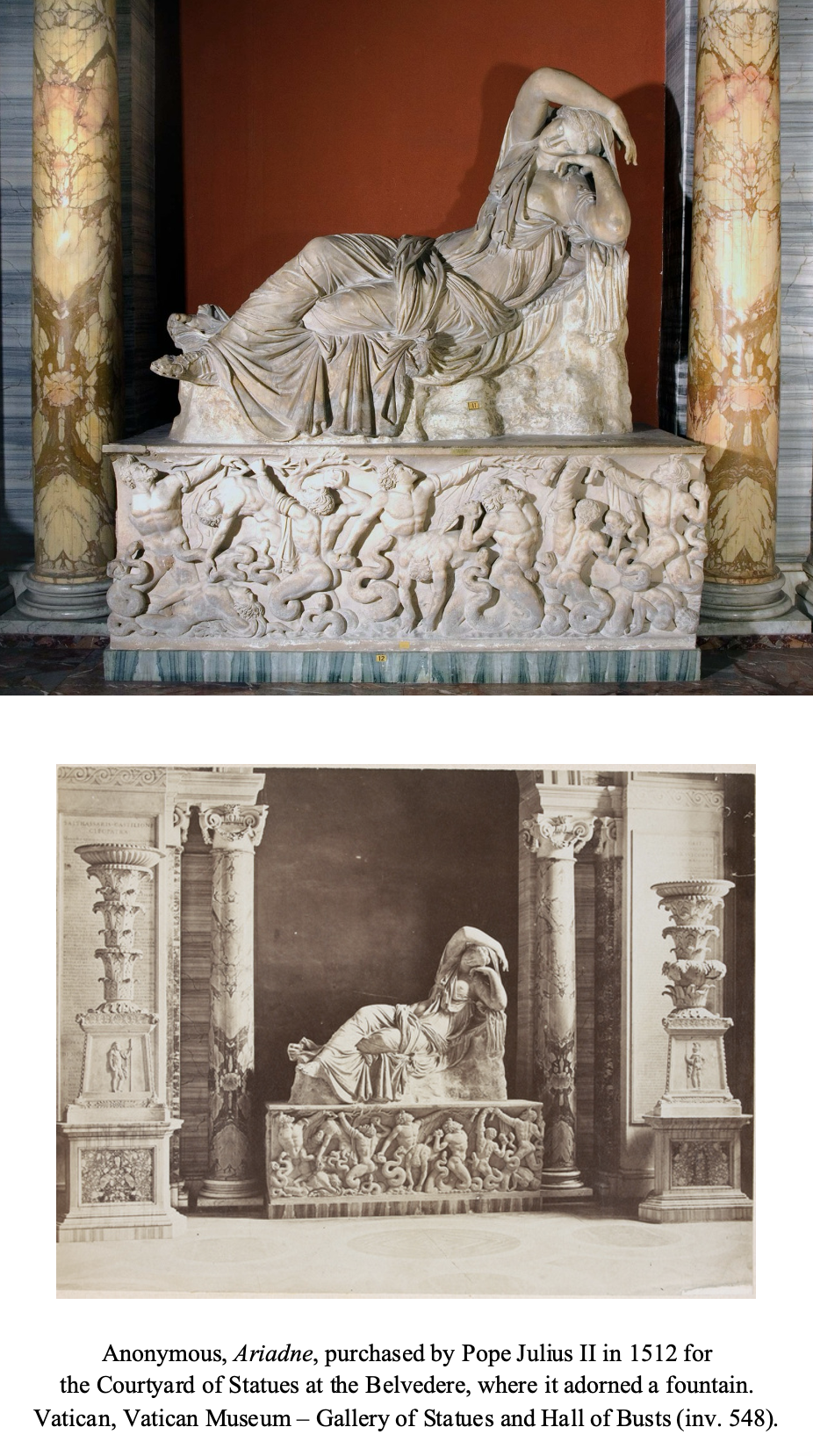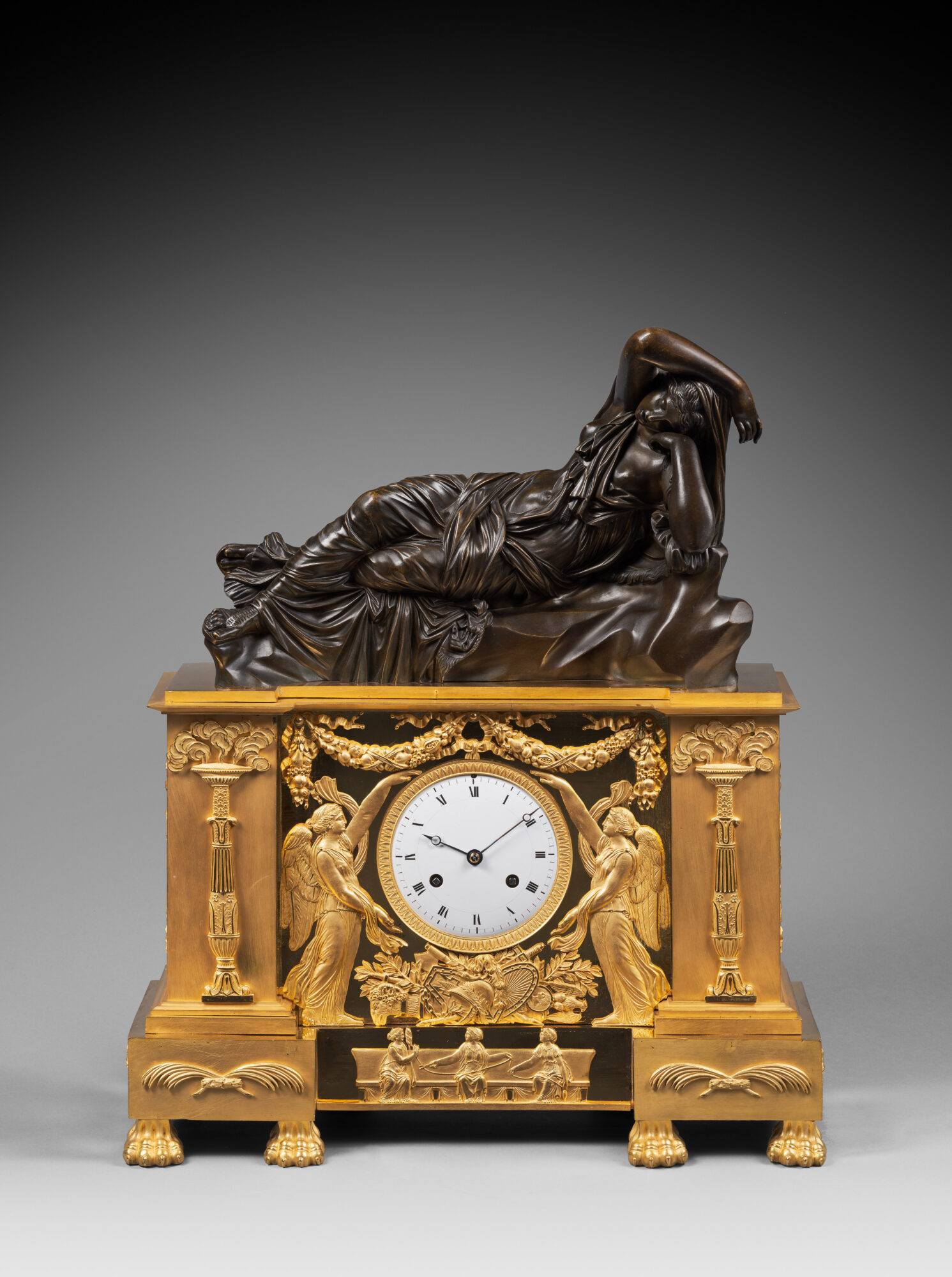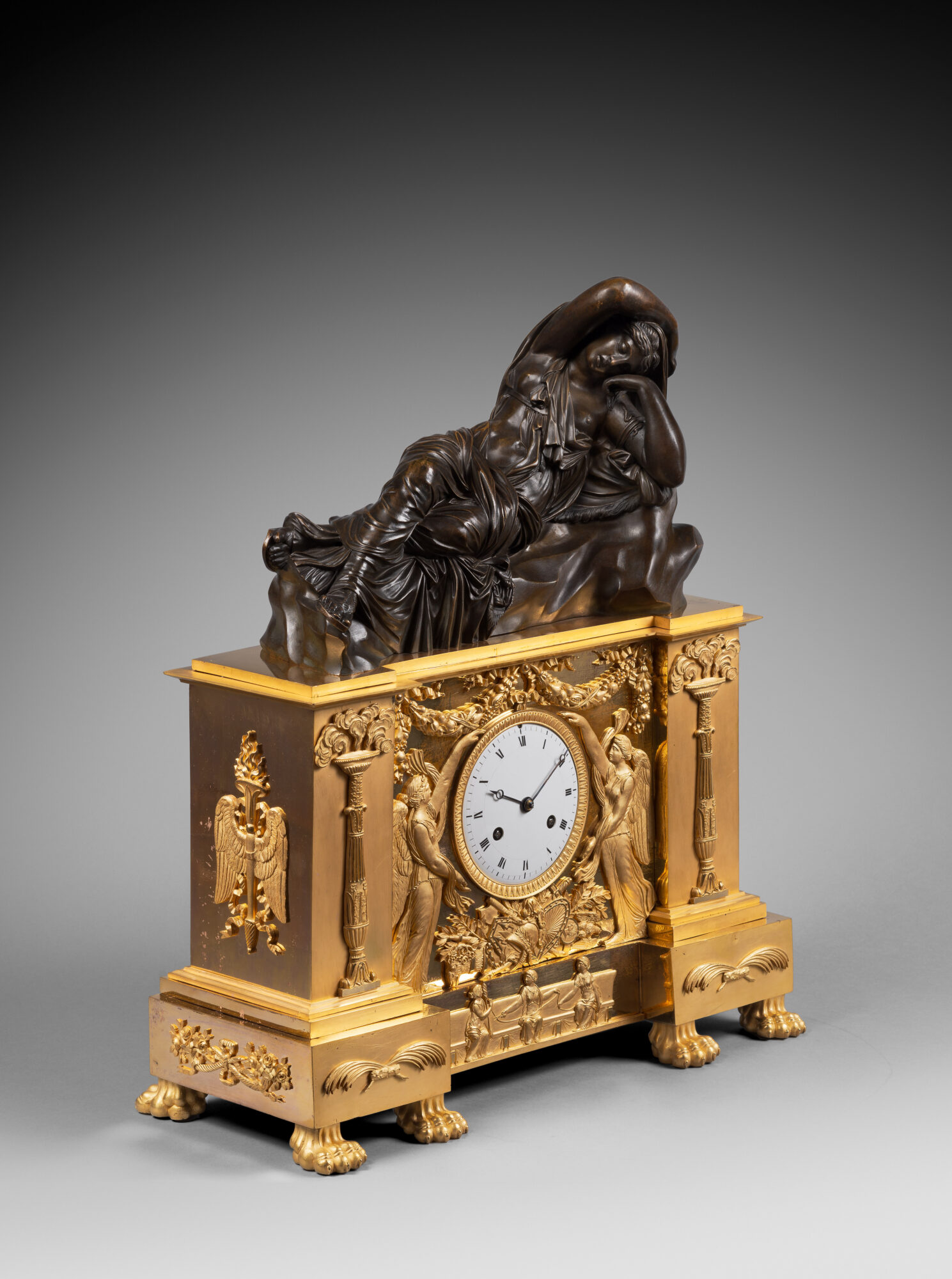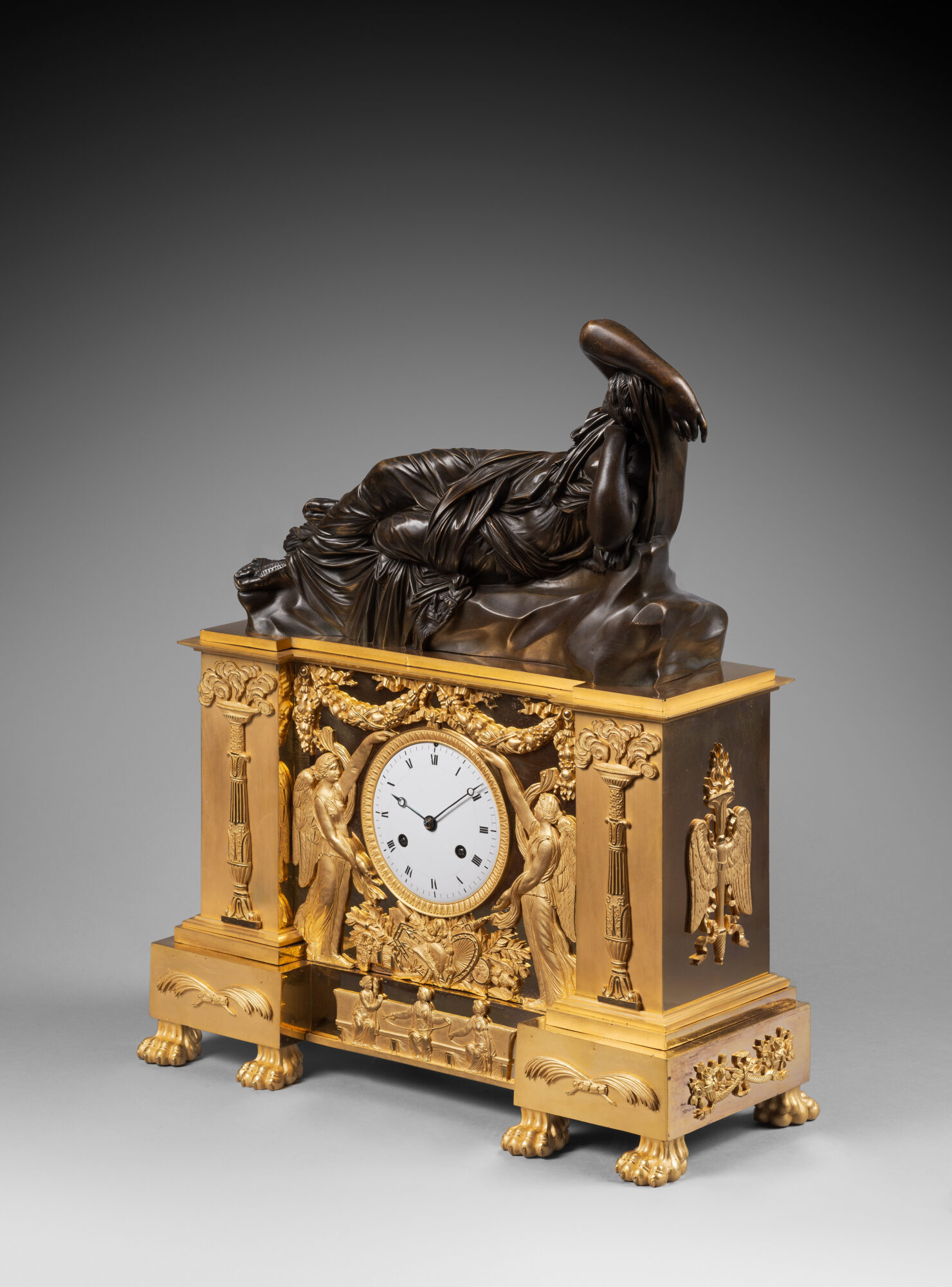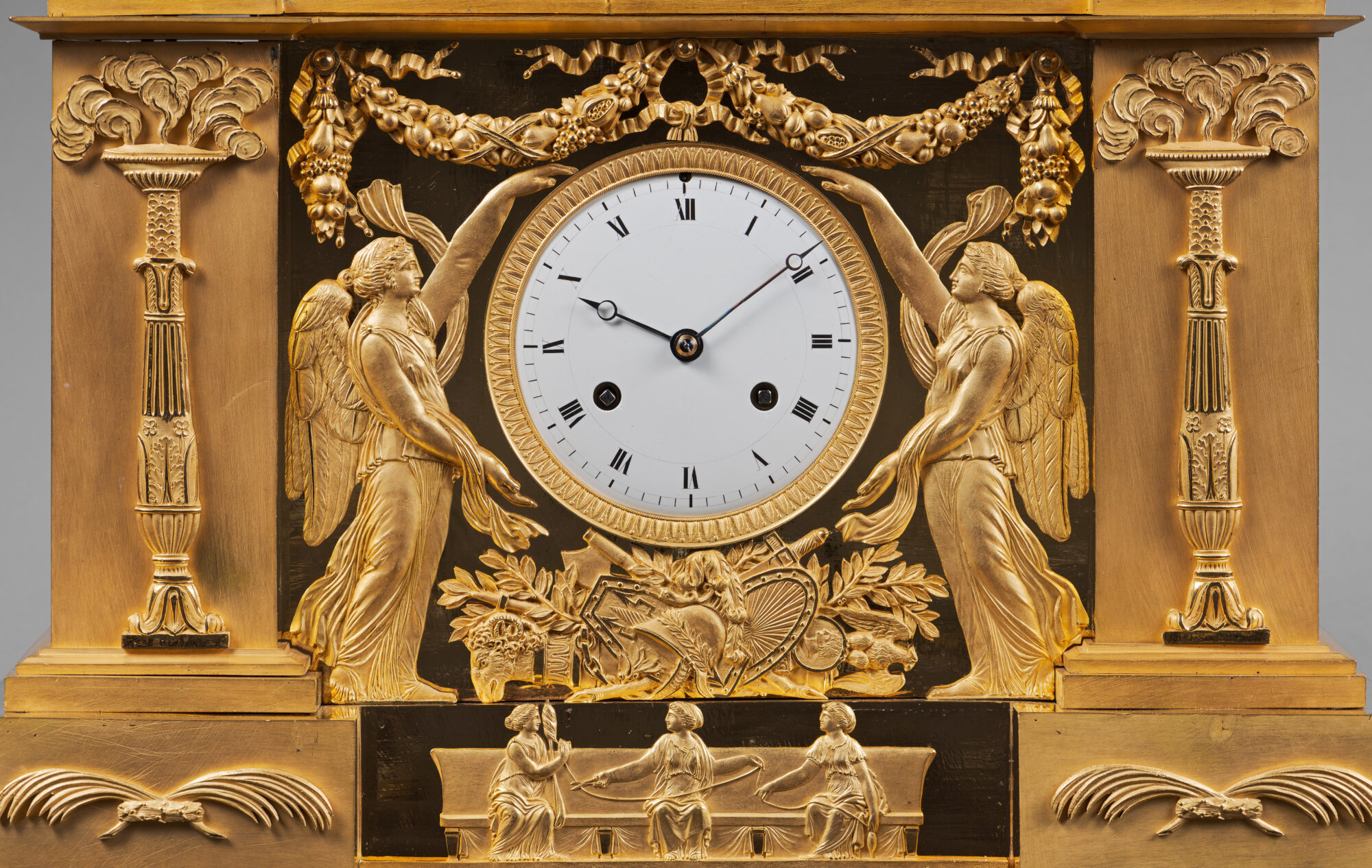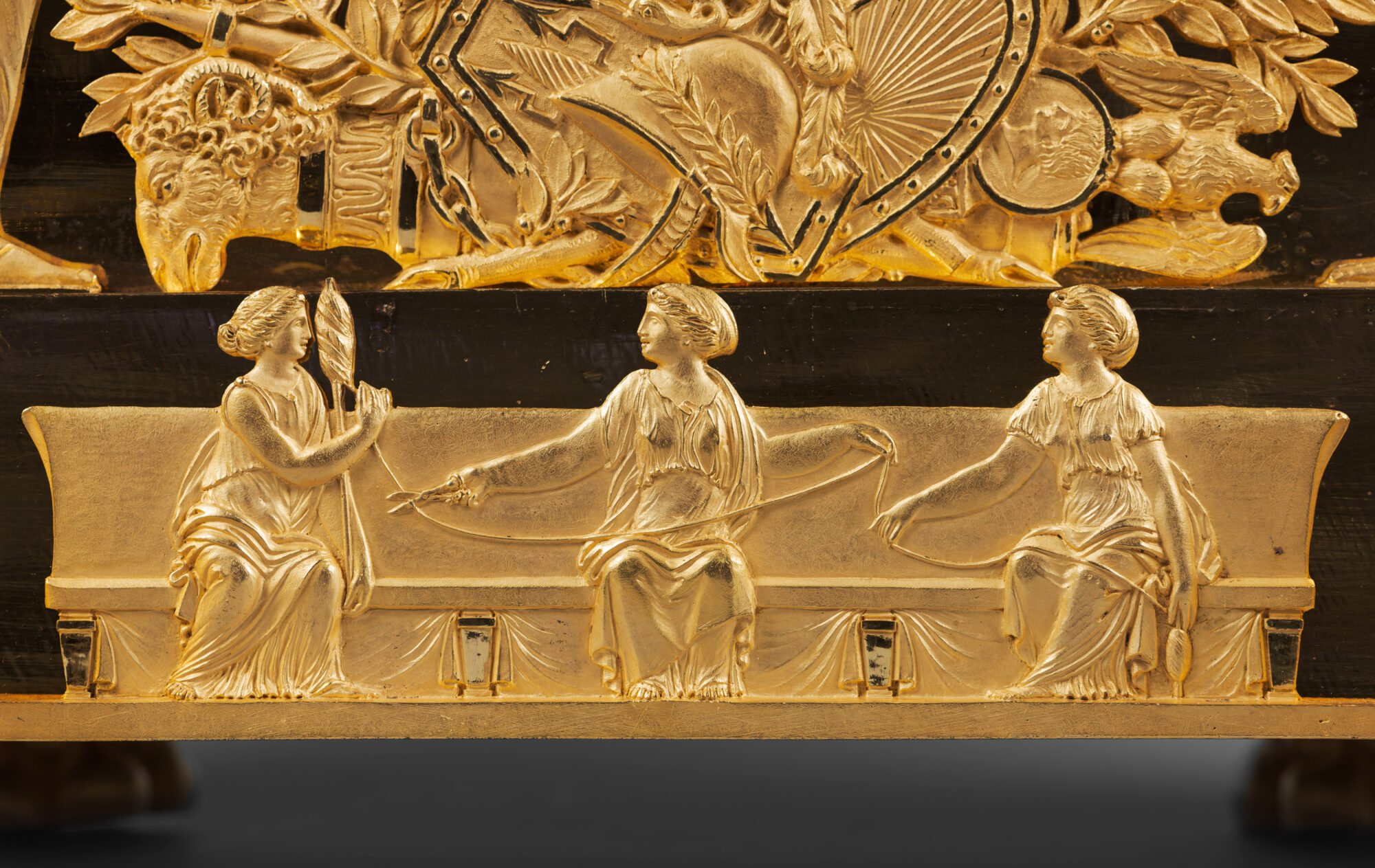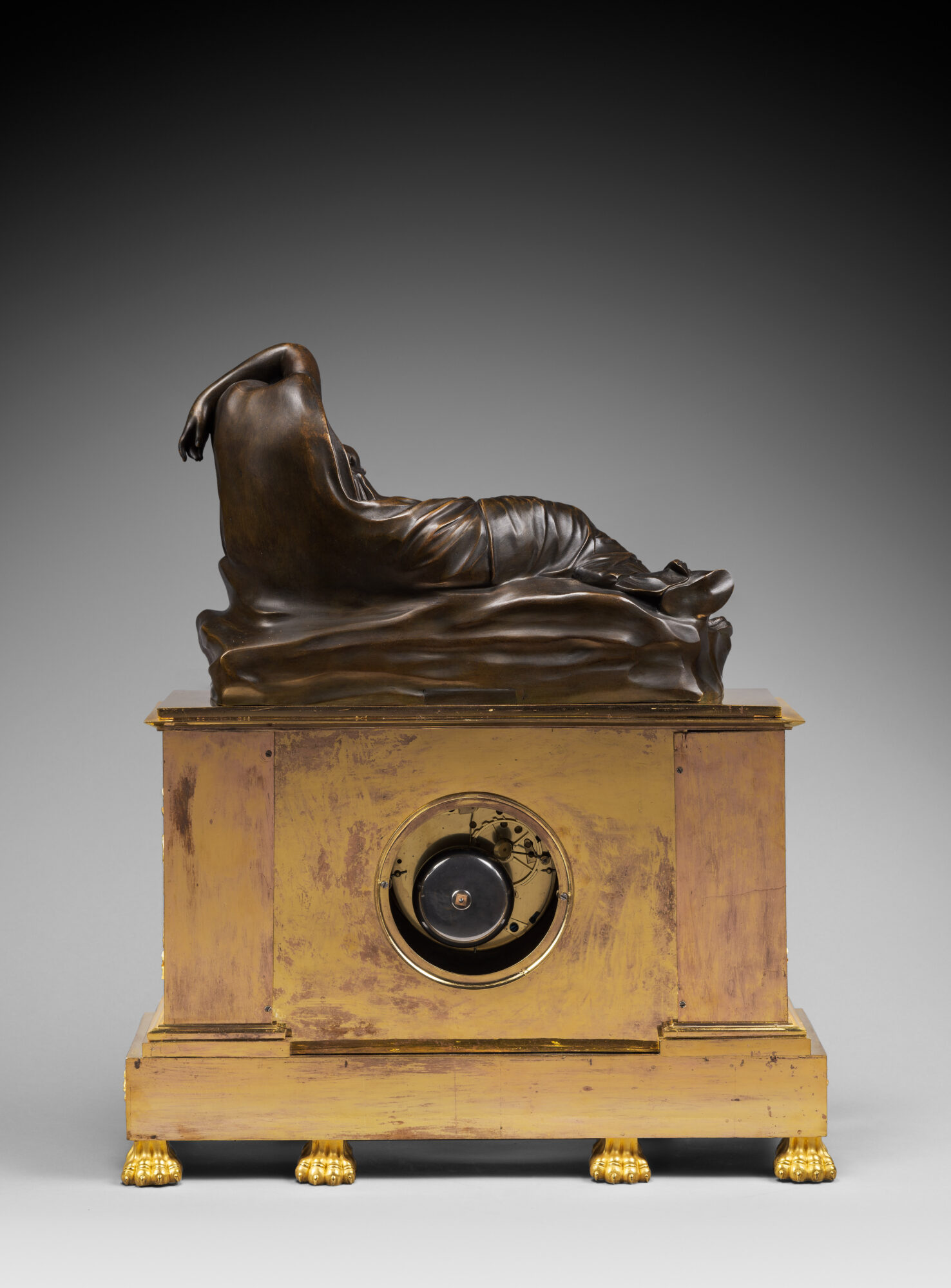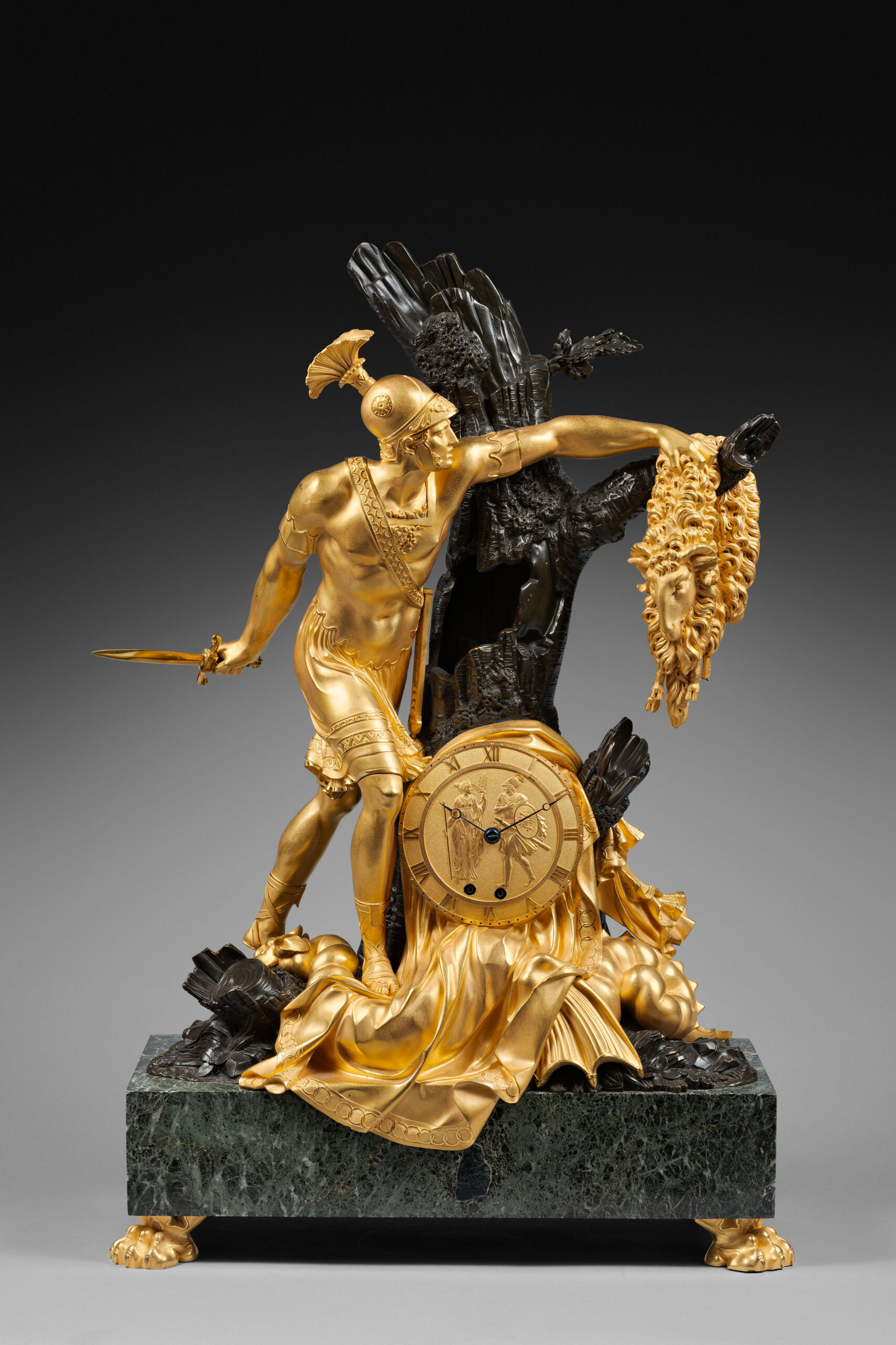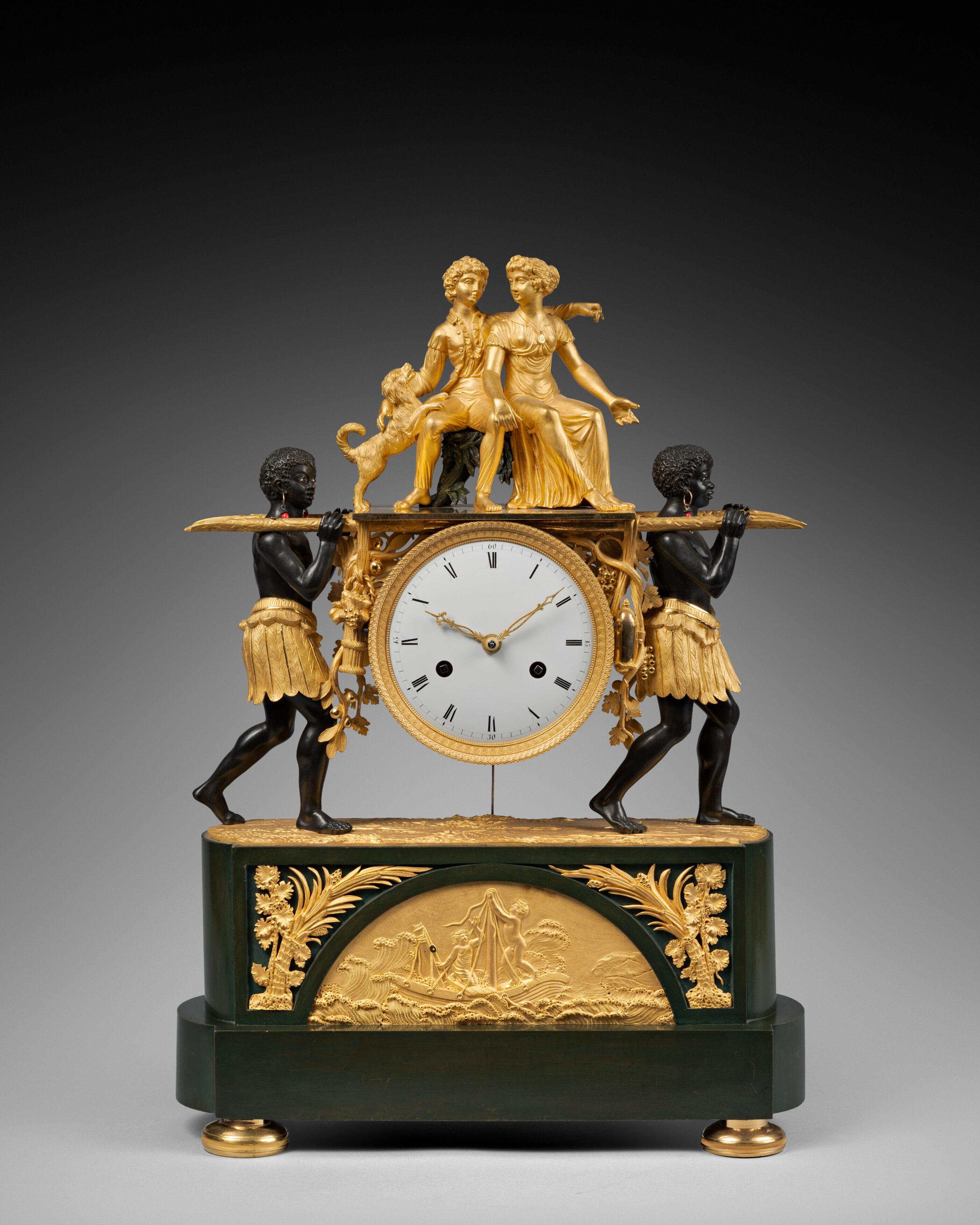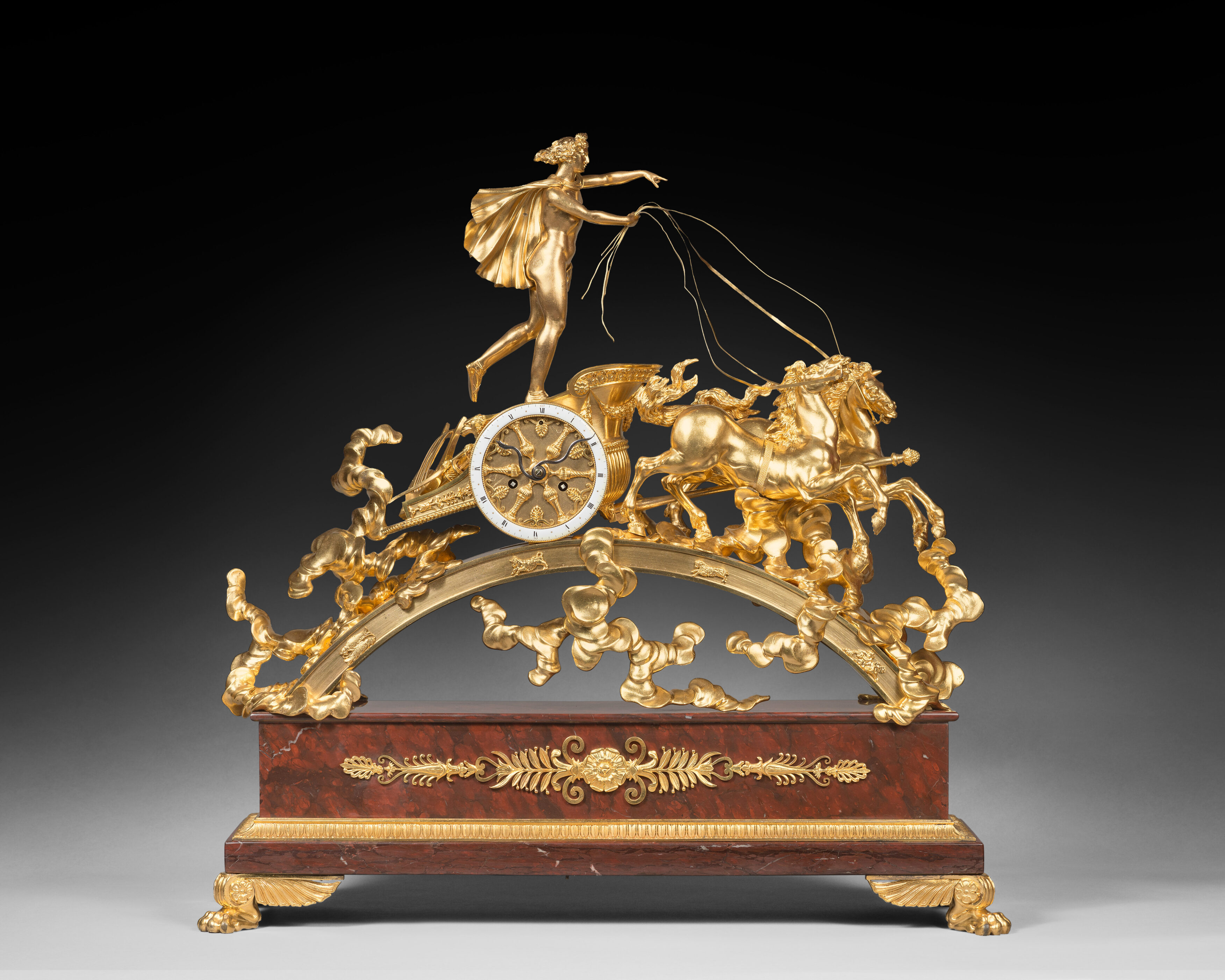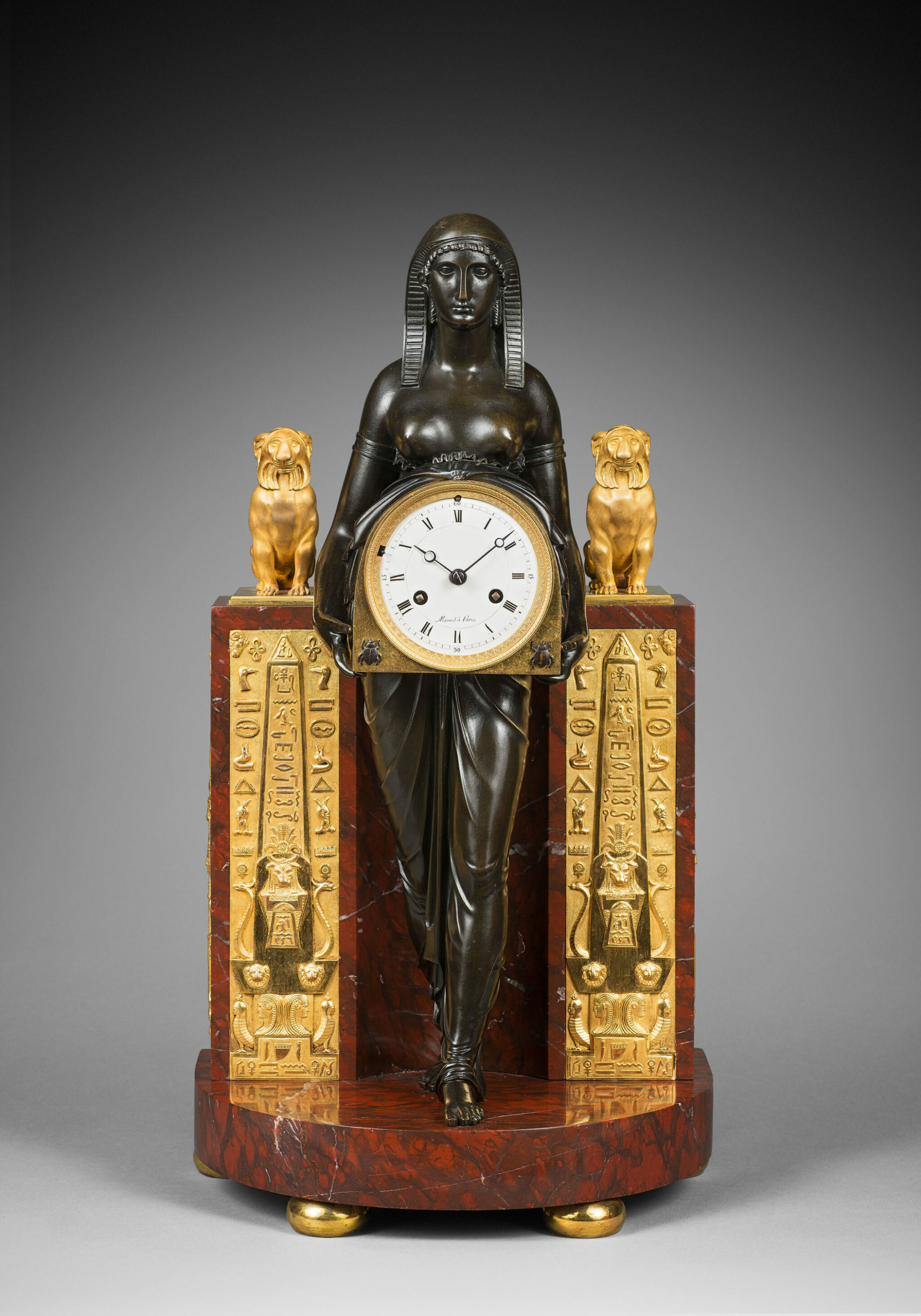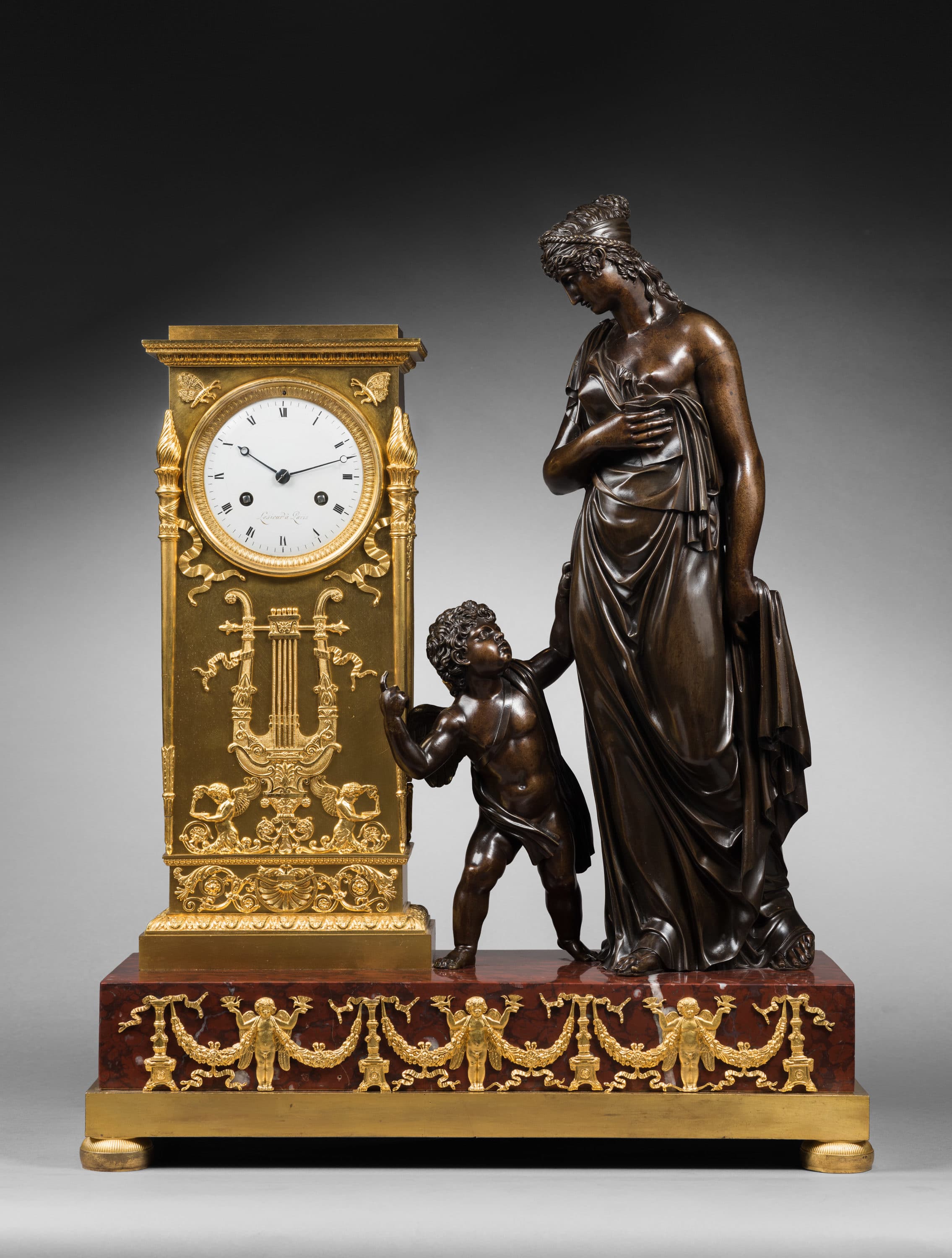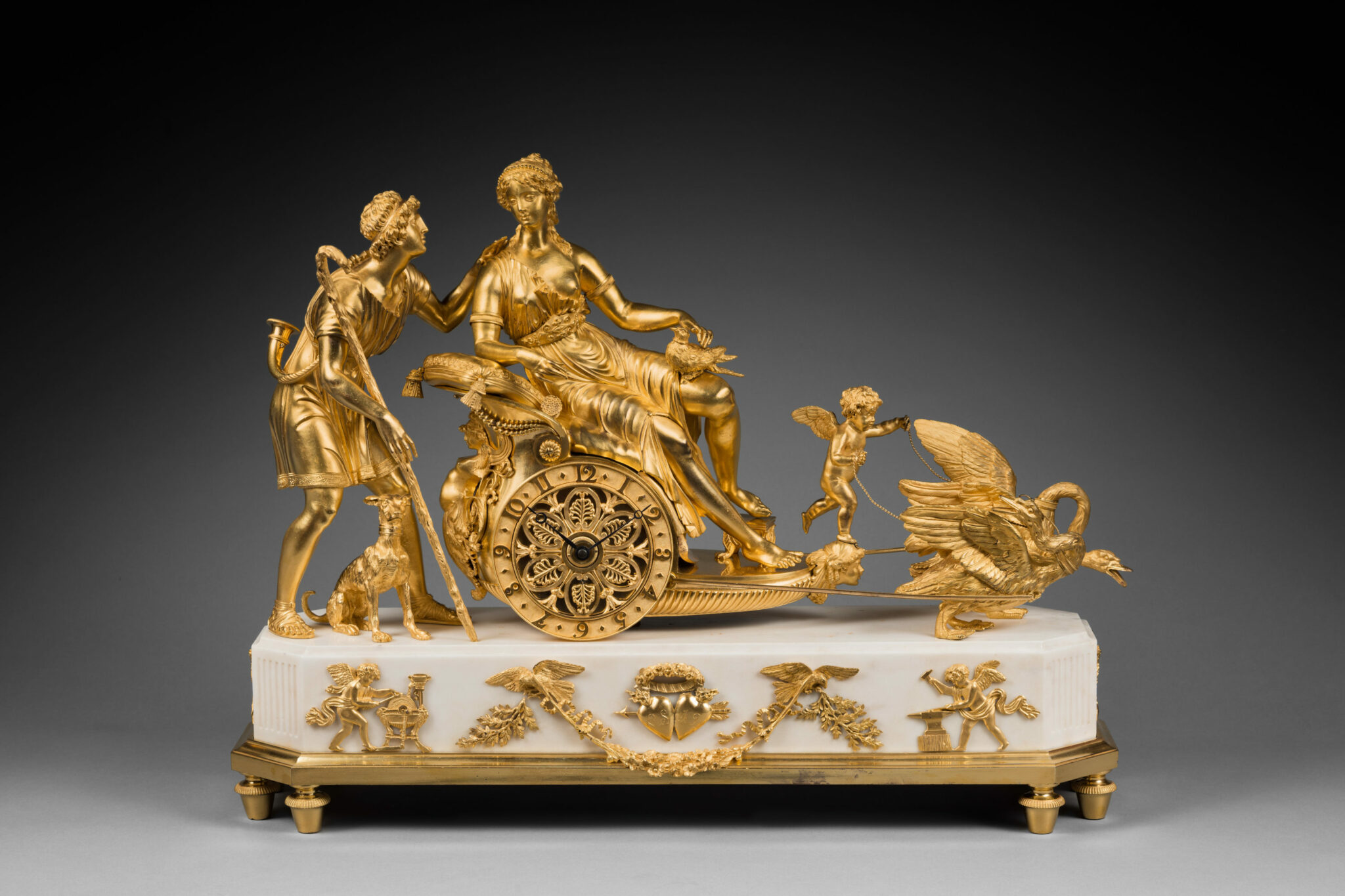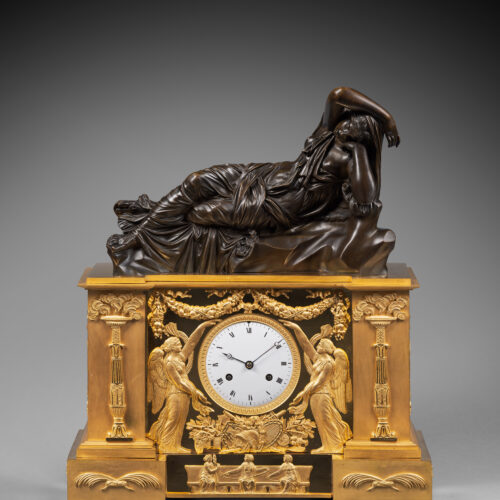Important Gilt Bronze Mantle Clock with Matte and Burnished Finishing
“The Sleeping Ariadne“
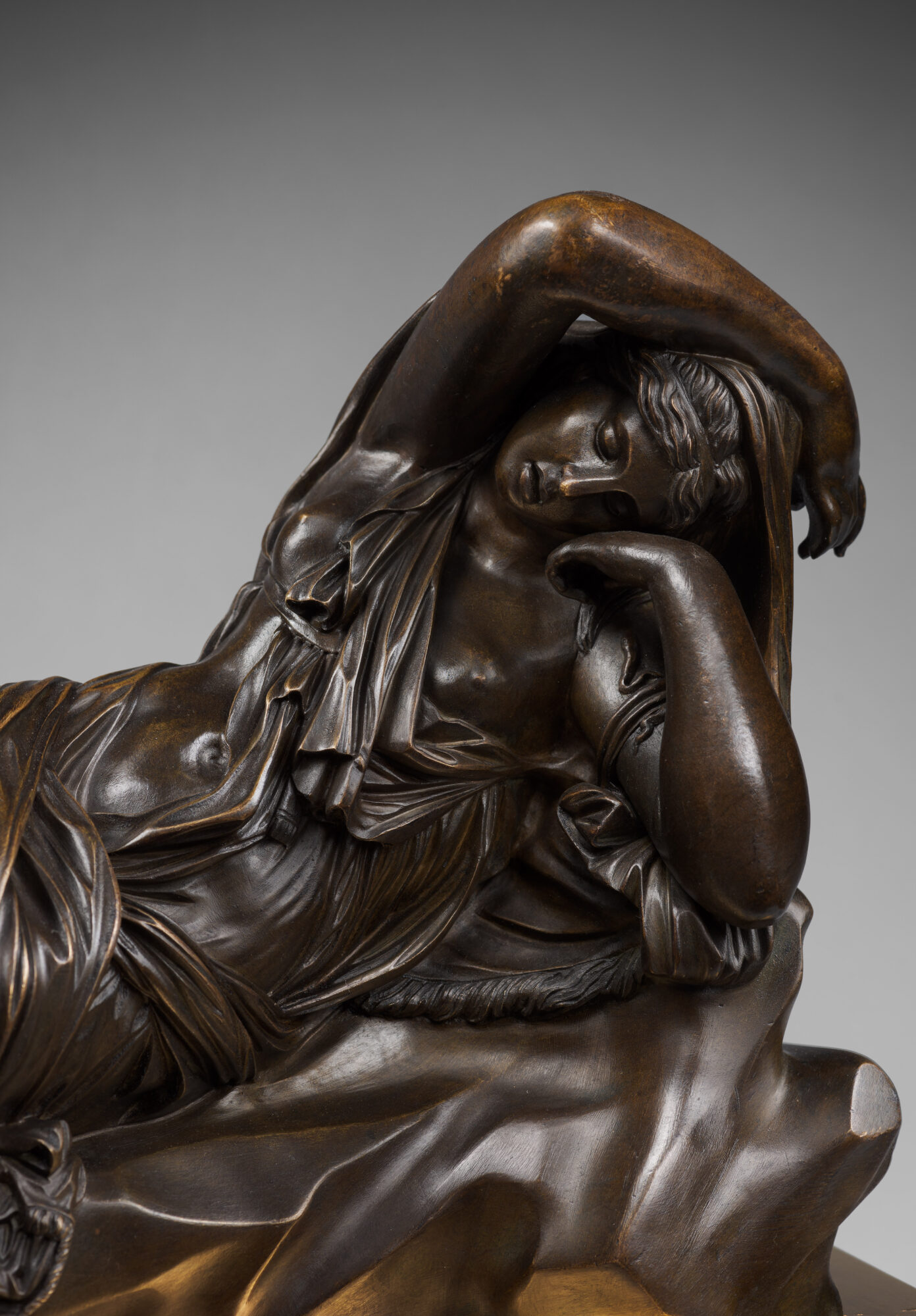
The Case Attributed to Bronze Caster André-Antoine Ravrio (1759-1814, master in 1777)
Paris, Empire period, circa 1805-1810
The circular white enamel dial indicates the Roman numeral hours and the minutes graduations, indicated along its outer border, by means of two blued steel Breguet hands. The hour and half hour striking movement is housed in an architectural case with the figure of the sleeping Ariadne, made of finely chased gilt and patinated bronze with matte and burnished finishing. The bezel is adorned with a frieze of alternating water leaves and stems. Surmounting the clock is a magnificent reclining female figure dressed in Roman draperies. Her right arm is raised above her head; she reclines on a stylized rock. The figure rests on a tall base, whose corners take the form of projecting pilasters adorned with flaming torches whose bases are adorned with crossed palm leaves. The central panel features two facing figures that represent Fame; they are surmounted by ribbon-tied garlands of fruit that are suspended from pastilles. Below, a military trophy features shields, a helmet, an axe, and a sword, surmounting three female figures seated on a parapet. They represent the three Parcae, or Fates, as they measure out the thread of life. The sides are adorned with flowering branches and winged, flaming torches. The clock stands on robust lion’s paw feet.
The remarkable design of the present clock, as well as its exceptional chasing and gilding, allow us to attribute it to André-Antoine Ravrio, one of the most talented Parisian bronze casters of the Empire period. The clock was directly inspired by an ancient Roman marble sculpture that was purchased in 1512 by Pope Julius II, to be placed in the sculpture court of the Belvedere Courtyard. Today it is part of the papal collection in the Vatican Museum in Rome. The figure represents the sleeping Ariadne. A Cretan princess, she was the daughter of Minos. She helped Theseus to vanquish the Minotaur but he abandoned her on the island of Naxos. She was awoken from her slumber by Dionysus, whom she subsequently married.
André-Antoine Ravrio (1759 - 1814)
Received master bronzier in 1777, Antoine-André Ravrio was one of the most important Parisian bronze-casters of the late 18th century and the First Empire. Main supplier to the Imperial Garde-meuble, Ravrio worked alongside Pierre-Philippe Thomire and Claude Galle on the refurbishment of the main residences of Emperor Napoleon and Empress Josephine, as well as supplying numerous bronze furnishings for the influential figures of the time, including a number of the Empire’s Marshals. Today, some of his work can be found in the collections of the Mobilier National in Paris, as well as in major international public and private collections.
